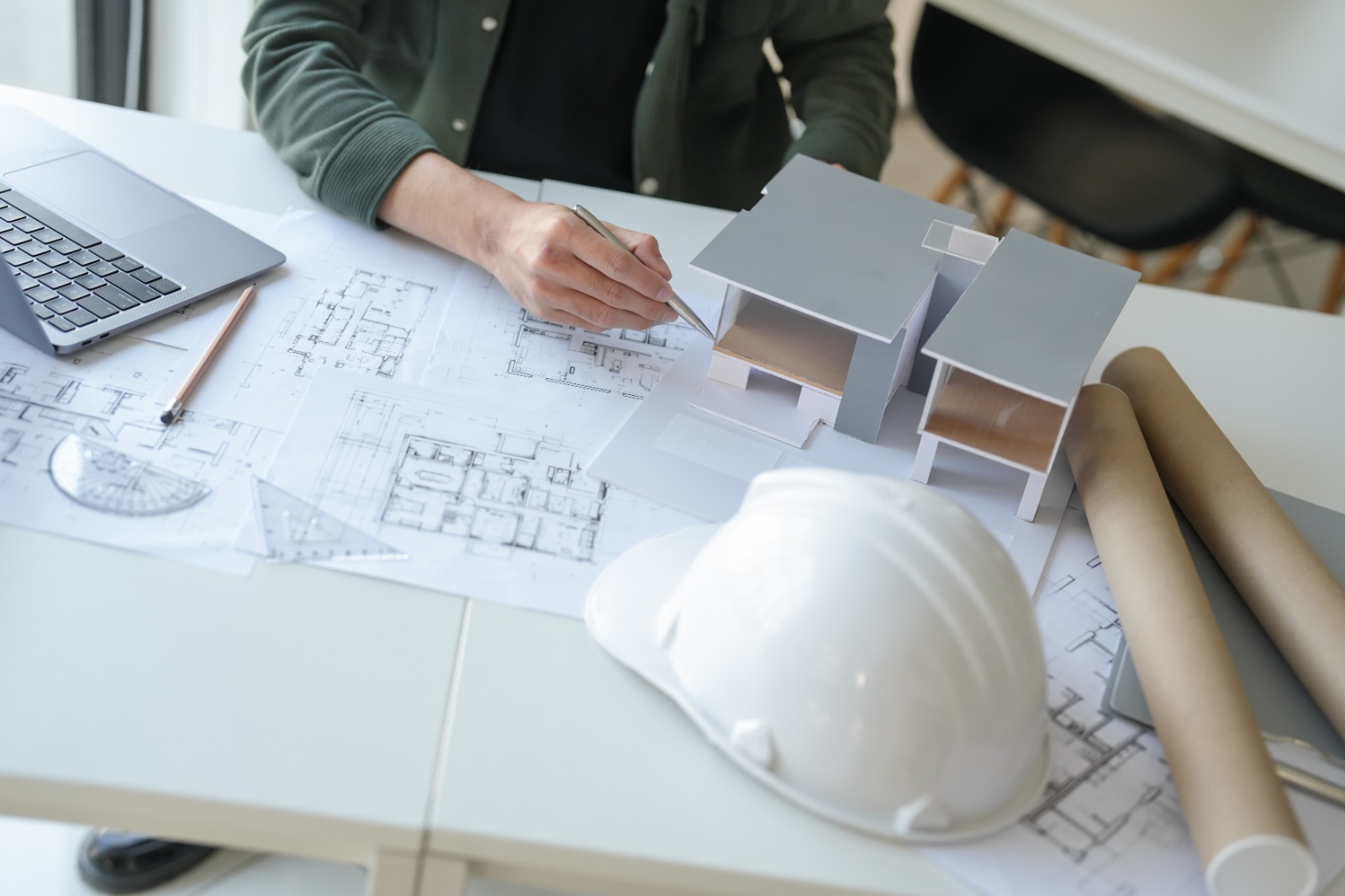
Blog
We keep you up to date on the most recent real estate news and events.
The Future of Home Design: Latest Trends in Residential Architecture
Title: The Future of Home Design: Latest Trends in Residential Architecture
Content: The world of residential real estate is evolving, and nowhere is this more evident than in architecture. As homebuyers seek not only shelter but a holistic living experience, modern architecture in the residential sector is stepping up to meet these demands. Whether it's eco-friendly designs, smart homes, or open-concept living, the latest architectural trends are reshaping how we perceive and experience our homes.
In India, this shift is particularly pronounced as the country's urban landscape grows rapidly. Developers are incorporating innovative designs and modern technologies to cater to evolving lifestyles, preferences, and sustainability needs. In this blog, we’ll explore the most exciting architectural trends shaping the residential real estate market in 2024 and beyond.
1. Sustainable and Eco-Friendly Architecture
Sustainability is no longer just a buzzword in the real estate industry—it’s a necessity. Homebuyers are increasingly conscious of their environmental impact and are seeking homes that offer a sustainable, energy-efficient lifestyle. This trend has led to a surge in eco-friendly architectural designs, with a strong emphasis on reducing carbon footprints.
Key Features of Sustainable Architecture:
● Green Building Materials: Use of sustainable materials like bamboo, recycled metal, and locally sourced stone to minimize environmental impact.
● Energy Efficiency: Solar panels, energy-efficient windows, and insulated walls to reduce energy consumption.
● Water Conservation: Rainwater harvesting systems, low-flow fixtures, and greywater recycling systems are becoming standard in modern homes.
● Green Spaces: Homes with rooftop gardens, vertical gardens, and landscaped outdoor areas help improve air quality and create a closer connection to nature.
Data Insight:
According to a report by JLL India, the demand for green-certified homes in India has seen a 30% increase over the past two years, driven by both environmental consciousness and the long-term financial savings that come with energy-efficient homes.
2. Open-Concept Living and Flexible Spaces
Modern homebuyers are no longer content with the rigid, compartmentalized layouts of traditional homes. Open-concept living spaces that blend the kitchen, dining, and living areas into a cohesive environment are now a dominant architectural trend. This design concept fosters a sense of spaciousness, encourages social interaction, and maximizes the use of available space.
Why This Trend is Gaining Popularity:
● Fluidity and Flexibility: Open-concept homes allow for versatile use of spaces, enabling homeowners to adapt their living areas to their specific needs.
● Natural Light and Airflow: With fewer walls, there’s more opportunity for natural light to flood the home, creating a brighter, airier atmosphere.
● Perfect for Modern Lifestyles: With work-from-home setups becoming increasingly popular, flexible spaces that can be easily transformed into home offices or study areas are highly valued.
Example in India:
In cities like Mumbai and Bangalore, developers are designing compact apartments with open floor plans to make smaller spaces feel larger and more accommodating for urban dwellers.
3. Smart Homes and Home Automation
Technology is playing a pivotal role in the transformation of residential architecture. Smart homes are no longer the future—they are the present. With smart technology integrated into every corner of the home, residents can control everything from lighting and temperature to security systems and appliances through their smartphones or voice-activated devices.
Key Elements of Smart Homes:
● Smart Lighting and Thermostats: Homeowners can control lighting and temperature remotely, ensuring energy efficiency and convenience.
● Integrated Security Systems: Advanced security features such as video doorbells, motion detectors, and smart locks provide peace of mind.
● Home Automation: Automated systems that adjust lighting, blinds, and even play music based on the time of day are becoming commonplace.
● Voice-Controlled Devices: The integration of voice assistants like Amazon Alexa or Google Assistant allows homeowners to control various aspects of their home with simple voice commands.
Data Insight:
The Indian smart home market is expected to reach USD 13.5 billion by 2026, according to a report by Statista, reflecting the growing demand for tech-enabled living spaces.
4. Minimalist Design with a Focus on Functionality
Minimalism is not just a design trend; it’s a lifestyle choice. As more homeowners prioritize simplicity and decluttering, minimalist architecture is gaining momentum. This design approach emphasizes clean lines, neutral color palettes, and a reduction in unnecessary ornamentation, creating serene, functional spaces.
Features of Minimalist Architecture:
● Clean Lines and Simple Forms: The architecture focuses on straight lines and geometric shapes, avoiding unnecessary complexity.
● Neutral Color Schemes: White, beige, grey, and other muted tones dominate the interiors, creating a sense of calm.
● Multi-Functional Furniture: To make the most of limited space, minimalist homes often feature furniture that serves multiple purposes (e.g., fold-out beds or storage-integrated tables).
● Less is More: Fewer walls, less clutter, and more focus on natural materials make minimalist homes feel spacious and welcoming.
This trend is particularly attractive in urban areas where space is a premium, and buyers are looking for functional, well-designed homes that maximize every square foot.
5. Biophilic Design: Bringing Nature Indoors
One of the most exciting trends in modern residential architecture is biophilic design, which emphasizes the integration of natural elements into indoor spaces. As people spend more time indoors, especially after the pandemic, there is a growing desire to reconnect with nature. Biophilic design meets this need by incorporating natural materials, plants, and light into the home environment.
Core Features of Biophilic Design:
● Natural Light: Large windows and skylights that bring in an abundance of natural light.
● Use of Natural Materials: Incorporation of wood, stone, and plants into the architecture to create a connection with the outdoors.
● Indoor Gardens and Green Walls: Many modern homes now feature indoor plants or vertical gardens that purify the air and create a relaxing environment.
● Water Features: Water bodies like indoor fountains or small ponds add to the tranquility of biophilic homes.
In cities like Chennai and Hyderabad, developers are increasingly incorporating biophilic elements to offer residents a healthier, more natural living environment.
6. Vertical Living and Skyscraper Residences
As urbanization accelerates and land becomes more scarce in metropolitan areas, vertical living is becoming the norm. High-rise residential buildings with state-of-the-art amenities and stunning views are on the rise, particularly in cities like Mumbai, Delhi NCR, and Bangalore. These skyscraper residences offer luxurious living spaces while addressing the challenges of limited urban space.
Why Vertical Living is a Trend:
● Maximizing Space: High-rise apartments make efficient use of limited land in densely populated cities.
● Luxury Amenities: These towers often include amenities like rooftop pools, fitness centers, and sky lounges, providing a premium living experience.
● Breathtaking Views: Skyscraper residences offer panoramic views of the city, which adds significant value to the property.
● Exclusive Living: Vertical living allows developers to create gated, private spaces with limited access, ensuring security and exclusivity for residents.
Data Insight:
According to Knight Frank India, the demand for high-rise residential units has grown by 15% over the last five years, particularly in Tier-1 cities.
7. Co-Living Spaces and Community-Oriented Architecture
The rise of co-living spaces is another trend reshaping residential architecture, especially in cities with a high concentration of young professionals and students. These community-oriented residences offer a blend of private and shared spaces, fostering interaction and a sense of community among residents. Developers are designing buildings that promote shared living experiences while maintaining individual privacy.
Features of Co-Living Architecture:
● Shared Amenities: Kitchens, lounges, and recreational spaces designed for communal use.
● Smaller, Private Units: While common spaces are shared, each resident enjoys a private bedroom or studio.
● Community-Focused Design: Architecturally, these spaces are designed to encourage interaction and collaboration, creating a sense of belonging.
Co-living spaces have gained traction in Indian cities like Gurugram, Pune, and Hyderabad, where young professionals seek affordable housing with a community feel.
Conclusion
The residential real estate market is undergoing a significant transformation, driven by changing lifestyles, technological advancements, and a growing emphasis on sustainability. Whether it’s the allure of smart homes, the serenity of biophilic designs, or the practicality of open-concept living, the latest architectural trends are shaping the future of how we live.
As developers and architects continue to innovate, homebuyers can expect more thoughtfully designed spaces that not only meet their practical needs but also enhance their overall quality of life. These trends, particularly in markets like India, reflect a desire for modernity, comfort, and sustainability—offering homes that are as much about lifestyle as they are about living spaces.